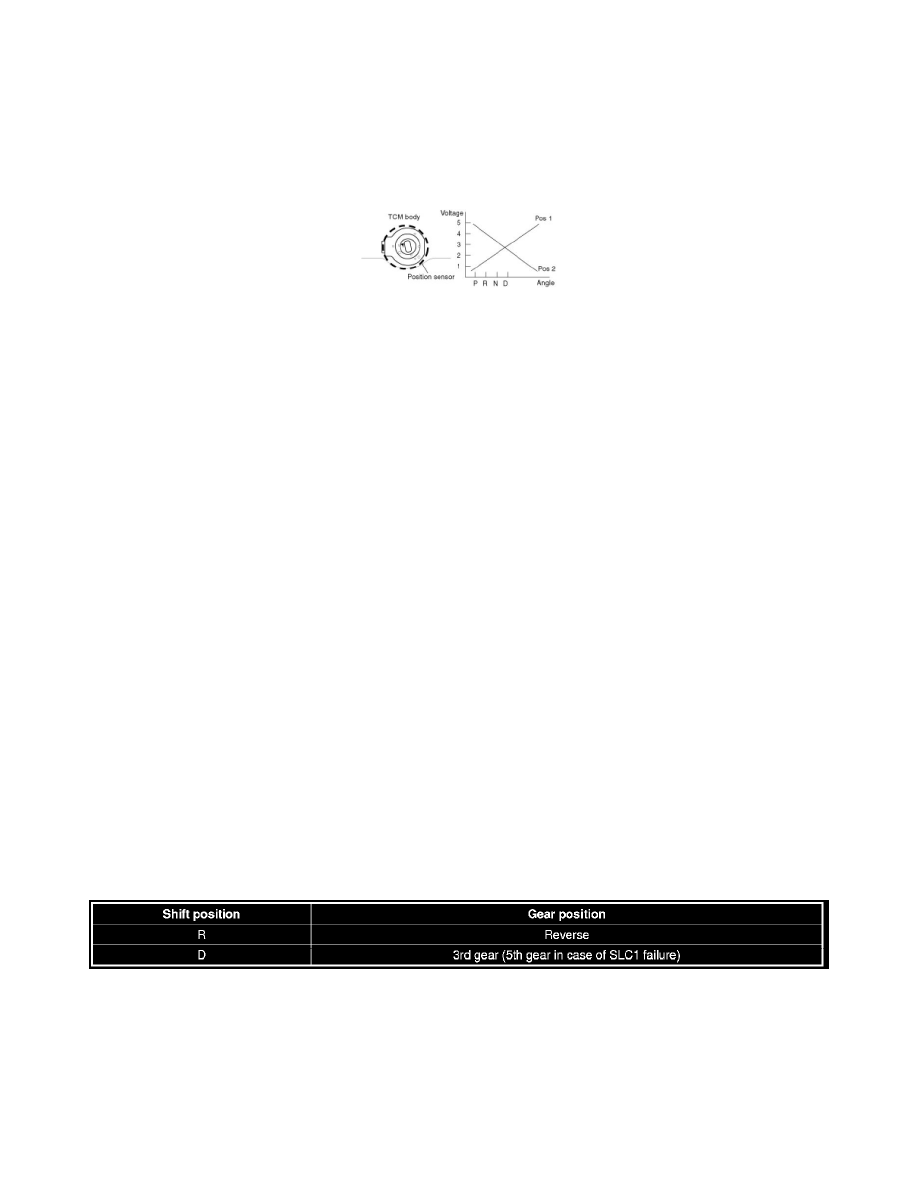Veracruz FWD V6-3.8L (2009)

Control Module: Description and Operation
Description
Adoption Of Integrated Position Sensor With Tcu
The shift position sensor is integrated in TCU. TCU indicates a shift position by reading a voltage difference between output voltages (Pos1,Pos2) from
the shift position sensor.
Function Of TCU
1. Automatic gear shift control
In automatic gear shift control, based on each gear shift pattern, S1 and S2 turn on or off and SLC1, SLC2, SLC3, and SLB1 are operated linearly
according to information that includes vehicle speed, Throttle valve opening degree, and brake signals.
2. Lock-up control
Based on rpm signals, signals from the engine control unit (engine rpm and throttle opening) and vehicle speed, smooth lock-up control is
achieved through linear control of the lock-up control solenoid (SLU). (However, this assumes that JWS-3309 <T-> is used.)
3. Garage shift control
When the shift lever is moved from N to D or from N to R, after the engine is started, a shift control solenoid (SLC1,SLC3) is used for the oil
pressure required by C1 clutch or C3 clutch and appropriately regulated oil pressure is supplied to the clutch, engaging smoothly without shock.
NOTE:
-
When the engine is cold, the first piston stroke resistance increases, creating a time lag in shift operation. In order to reduce the time lag,
control is not performed.
-
By controlling the oil pressure according to the piston stroke, smooth engagement without shock becomes possible.
4. Reverse control
If the shift lever is moved from N to R while the vehicle is traveling and the transmission shifts into reverse, the wheels may be locked, which is
extremely dangerous. In order to avoid this, TCU inhibits the transmission from shifting into reverse while traveling.
NOTE:
-
Even when the shift lever is moved from N to R, the transmission does not shift into reverse if the vehicle speed is 11 km/h or more.
-
When this control is activated, the C3 clutch is released without operating the shift control solenoid (SLC3) so that the transmission does not
shift into reverse.
-
Reverse control takes precedence over N-R shift control.
5. Self-diagnosis function
The TCU monitors the communication status of each sensor, electronic component and ECU including the engine control unit. If any malfunction
should occur, the TCU functions to warn the driver and stores the malfunction as a diagnosis code.
6. Fail-safe
With the fail-safe function, if any malfunction should occur in the automatic transmission system, the TCU will output a control signal, and control
will be performed to make traveling a minimum distance possible. If shift solenoid malfunction, the TCU will cancel the output of control signals
to the solenoid. If this happens, automatic transmission gear shifting will be controlled by oil pressure circuits only and the gears will shift as
shown in the chart below.
7. Driver adaptive shift control
The F21 for HMC does not have a driving mode selection switch that allows drivers to select a mode themselves. The vehicle is ordinarily in
economy mode. However, when specific conditions are met, the TCU selects a shifting pattern appropriate to driving conditions from all of the
shifting patterns and switches automatically.
